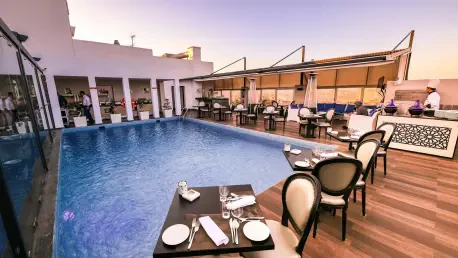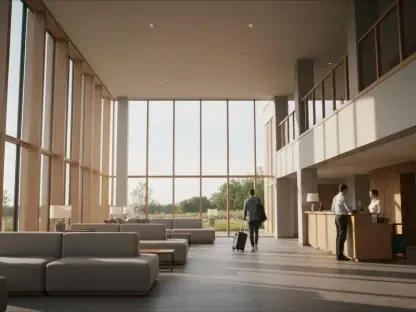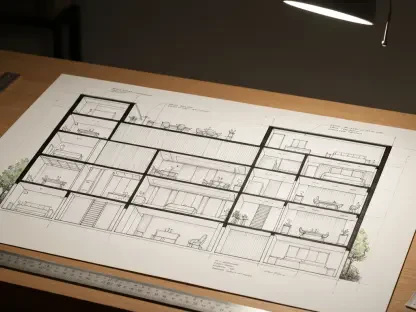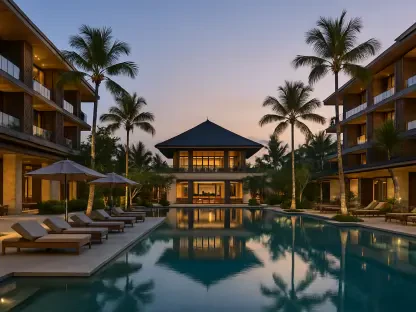In 2025, the hospitality industry faces a pivotal moment as luxury undergoes a dramatic transformation, driven by a staggering shift in consumer priorities that challenges traditional notions of extravagance. Recent data indicates that over 60% of high-net-worth travelers now prioritize emotional connection and personalized experiences over conventional displays of wealth, marking a stark departure from just a decade ago. This evolving landscape presents both a challenge and an opportunity for brands to rethink what luxury means in a world where authenticity often trumps extravagance. The purpose of this analysis is to dissect these emerging trends, evaluate market dynamics, and forecast the trajectory of luxury hospitality. By examining current patterns and future projections, this exploration aims to equip stakeholders with actionable insights to navigate a sector at a transformative crossroads.
Deep Dive into Market Trends and Projections
The Decline of Opulence: A New Consumer Mindset
The luxury hospitality market is witnessing a profound pivot away from material excess toward meaningful engagement. Industry reports from 2025 highlight that travelers, especially younger demographics like Millennials and Gen Z, are increasingly drawn to experiences that resonate on a personal level rather than properties showcasing overt wealth. This shift is evidenced by the growing popularity of boutique and lifestyle brands that focus on curated, intimate settings over grandiose architecture. Market projections suggest that by 2027, nearly 75% of luxury bookings will prioritize experiential offerings, pushing traditional five-star hotels to adapt or risk obsolescence. The challenge lies in redefining prestige without alienating loyal clientele who still value heritage markers.
Moreover, economic factors play a significant role in this transition. With global disposable income for travel stabilizing post-pandemic, a broader demographic now accesses luxury through tiered pricing models. Brands adopting flexible room categories—offering entry-level options alongside premium suites—are seeing a 20% uptick in bookings across diverse income brackets. This democratization of luxury, while promising wider market reach, raises concerns about maintaining exclusivity, a core component of high-end branding. Balancing accessibility with aspirational allure will be critical for sustained growth.
Service Evolution: Empathy as a Market Differentiator
Another dominant trend shaping the luxury hospitality sector is the reimagining of service culture, where empathy trumps formality. Current market analysis reveals that guest satisfaction scores are highest in properties where staff interactions are unscripted and genuine, a departure from rigid protocols of the past. Hotels investing in training programs that prioritize personality over traditional qualifications report a 15% increase in repeat bookings, underscoring the value of human connection. Technology, particularly AI-driven tools, supports this by automating back-end tasks, allowing staff to focus on personalized guest engagement.
Looking ahead, the integration of technology in service delivery is projected to grow, with an estimated 30% of luxury properties adopting AI for operational efficiency by 2027. This frees up resources for front-line staff to build rapport with guests, a factor increasingly linked to brand loyalty. However, the risk of inconsistent service quality across diverse teams remains a hurdle, as does the cost of upskilling workforces. Despite these challenges, the market consensus points to empathetic service as a key differentiator in an oversaturated luxury segment.
Community and Wellness: Driving Urban Market Growth
Luxury hospitality is also capitalizing on community integration and wellness as growth drivers, particularly in urban markets. Data from 2025 shows that hotels functioning as community hubs—through locally inspired food and beverage offerings and partnerships with regional providers—see a 25% higher footfall from non-guests, boosting ancillary revenue. This trend aligns with consumer demand for authentic, destination-specific experiences, positioning properties as integral parts of their locales rather than detached enclaves. Forecasts indicate that mixed-use developments combining hospitality with local dining will dominate new projects in major cities over the next few years.
Wellness, once a niche offering, has emerged as a cornerstone of luxury, especially among urban travelers seeking balance. Market studies reveal that properties with integrated fitness and well-being ecosystems report 18% higher occupancy rates compared to those without. The rise of co-located hotels and wellness clubs caters to a growing segment prioritizing health alongside leisure and work. While these initiatives require substantial upfront investment, their potential to attract a lifestyle-focused clientele positions them as a long-term bet for market expansion, provided cultural authenticity is maintained.
Sustainability and Internal Culture: Non-Negotiable Priorities
Sustainability has transitioned from a buzzword to a market imperative in luxury hospitality, with 80% of travelers in 2025 citing eco-conscious practices as a deciding factor in booking decisions. Properties implementing green initiatives—such as energy-efficient designs and zero-waste policies—are not only meeting regulatory pressures but also gaining favor with environmentally aware consumers. Projections suggest that by 2027, sustainable certifications will influence over half of luxury travel purchases, compelling brands to embed these practices into their core operations without compromising comfort.
Equally critical is the focus on internal culture, particularly amid ongoing labor shortages. Market insights indicate that hotels fostering supportive work environments see a 10% lower staff turnover rate, directly impacting service quality. Investing in employee well-being is no longer optional but a strategic necessity to ensure consistent guest experiences. The interplay between sustainability and staff care forms a dual pillar for future-proofing luxury brands, addressing both external expectations and internal stability in a competitive market.
Reflecting on Insights: Strategic Pathways Forward
Looking back, the market analysis of luxury hospitality in 2025 painted a clear picture of an industry in flux, where traditional opulence gave way to emotional resonance, accessibility, and community focus. The data and trends dissected revealed that success hinged on adapting to consumer desires for authenticity and connection, whether through empathetic service, local integration, or wellness offerings. Sustainability and internal culture emerged as foundational elements that no brand could afford to overlook.
Moving forward, strategic recommendations include prioritizing investments in human-centered design and technology to enhance guest interactions while streamlining operations. Brands are advised to forge deeper ties with local communities through tailored offerings, ensuring relevance in diverse markets. Embedding wellness and eco-friendly practices into core propositions offers a pathway to capture emerging demographics. Finally, nurturing a supportive workplace environment stands out as essential to sustaining the high-touch service that defines modern luxury. These steps, grounded in the findings, provide a roadmap for hospitality leaders to not only adapt but thrive in an ever-evolving landscape.









